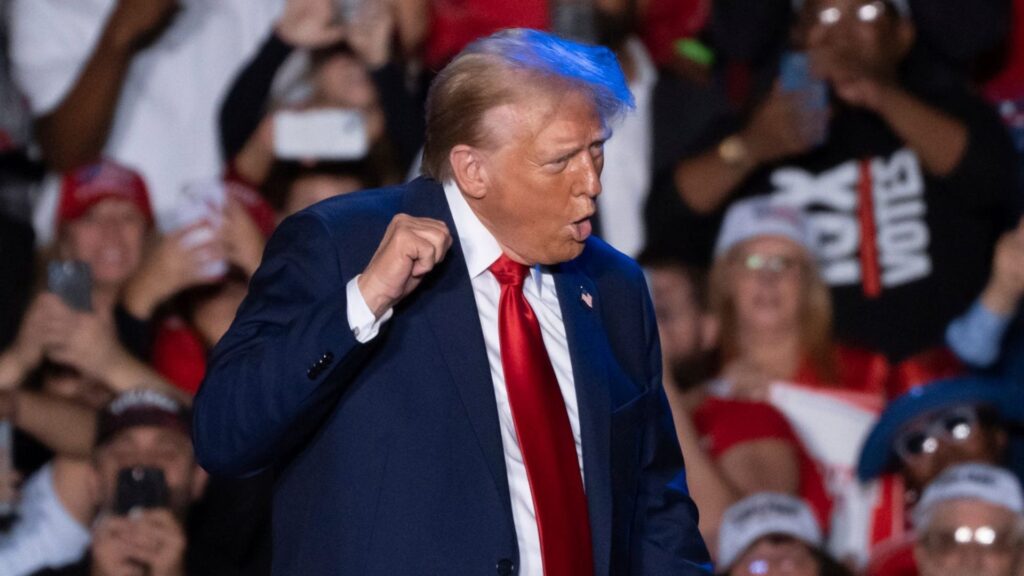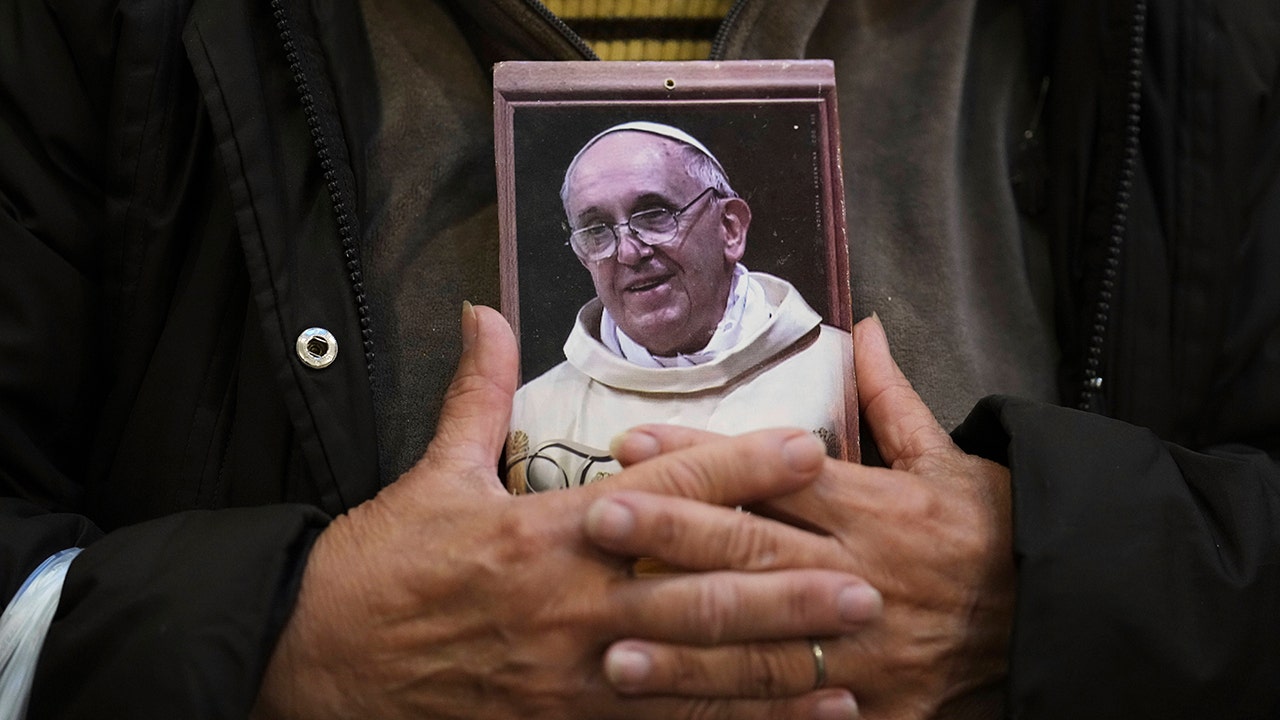As the 2024 election nears, battleground states Michigan, Pennsylvania, and Wisconsin are proving to be key indicators for the outcome, with recent polling suggesting a tight race.
The latest New York Times/Siena College poll shows Kamala Harris and former President Donald Trump locked in a statistical tie in Pennsylvania and Michigan, with Harris holding a narrow 2-point lead in Wisconsin, though this falls within the poll’s margin of error.
For decades, these three states have generally supported the same presidential candidate, with 1988 being a rare exception when Wisconsin supported Democrat Michael Dukakis while Michigan and Pennsylvania backed Republican George H.W. Bush. However, with polling showing razor-thin margins, there is a possibility the states could diverge this cycle.
Trump Surging to Victory – Get the Ultimate Trumpinator Bobblehead as He Closes in on 2024!
Harris spent the final weekend before the election in the Midwest, campaigning in Wisconsin and Michigan, and is expected to be in Pennsylvania on election eve.
The three states hold a combined 46 Electoral College votes, making them essential to her path to victory.
Meanwhile, Trump’s campaign schedule includes appearances in both the Midwest and traditionally Democratic-leaning states like Virginia, suggesting confidence in making gains.
Pennsylvania has emerged as a pivotal state for both campaigns. While Harris holds slight leads in some polling averages in Michigan and Wisconsin, RealClearPolitics shows Trump with a marginal advantage in Pennsylvania.
Harris’s chances for reelection may hinge on securing Pennsylvania’s 19 Electoral College votes, which Trump won in 2016 but narrowly lost in 2020.
Polling in Pennsylvania indicates fluctuating voter enthusiasm. Among GOP supporters in Allentown, 68-year-old Wendy Kleintop and her cousin Doris Eckhart expressed confidence in Trump’s chances but voiced concerns about potential irregularities. “There’s always that margin of error that the Democrats will cheat because they’ve cheated before,” Kleintop told the Washington Examiner.
Trump echoed these sentiments during a recent rally in Lititz, Pennsylvania, where he urged reforms in voting procedures. “For future elections… you want to damn well go to paper ballots, you ought to go to voter ID,” he said, suggesting changes to election protocols.
In Norristown, Pennsylvania, Democratic voter Timothy Webb raised concerns about Harris’s campaign strategy, encouraging her to project confidence. “Say you’re going to win. It motivates your people. It makes them feel confident,” he said.
These three states, often referred to as the “blue wall,” have supported Democratic candidates consistently from 1992 until Trump’s 2016 win.
Analysts believe the states may continue their historical pattern of voting in alignment, although some are open to the possibility of a split.
Marquette Law School’s poll director, Charles Franklin, said, “Each was close enough in 2020 and in current polling averages that I think it is entirely possible they split this time.”
Shifts in voter registration also add to the uncertainty.
Pennsylvania now has 9 million active registered voters, with Democrats maintaining a slight edge over Republicans, though the gap has narrowed since 2020.

Additionally, absentee ballot returns in Pennsylvania show Democrats leading with 990,000 ballots returned compared to 584,000 from Republicans.
Harris’s appeal to key voting blocs includes outreach to Michigan’s Arab American community, amid heightened tensions following the Israel-Hamas conflict. Speaking at Michigan State University, she pledged, “As president, I will do everything in my power to end the war in Gaza… ensure Israel is secure, and ensure the Palestinian people can realize their right to dignity, freedom, security, and self-determination.”
Pollsters like Michael Hanmer, director of the Center for Democracy and Civic Engagement at the University of Maryland, anticipate a close finish across the blue wall states.
Hanmer noted that while the states have similarities, demographic differences, like Wisconsin’s relatively lower diversity, could influence outcomes.
Charles Stewart, head of MIT’s Election Lab, sees the Midwest battlegrounds as likely to align again this year but acknowledged voter enthusiasm as a potential wildcard. “This is a situation where, if there’s a shift of 2 points nationwide toward Trump between now and Election Day, it will pull those three states into the Trump column,” he said, adding that Harris could similarly benefit from any late shift in her favor.
With just days remaining, both campaigns are pushing to rally their bases in these crucial swing states that may once again determine the path to the White House.
The opinions expressed by contributors and/or content partners are their own and do not necessarily reflect the views of LifeZette. Contact us for guidelines on submitting your own commentary.
Read the full article here







![Daytime Kidnapping Attempt in Florida Foiled by Quick-Thinking Good Samaritans [WATCH] Daytime Kidnapping Attempt in Florida Foiled by Quick-Thinking Good Samaritans [WATCH]](https://www.rvmnews.com/wp-content/uploads/2025/04/2025.04.25-06.45-rvmnews-680bd853d60f3.jpg)


